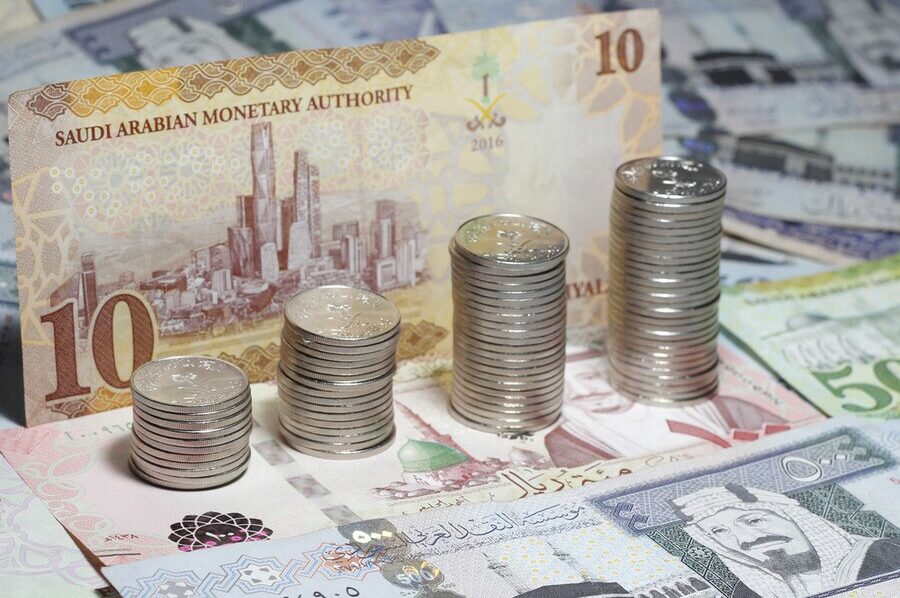Global professional services firm Alvarez & Marsal (A&M) has released its latest Saudi Arabia (KSA) Banking Pulse for the fiscal year 2022. The report shows that higher credit demand, better asset yield, and operating efficiencies drove the top Saudi lenders’ profitability amidst rising benchmark interest rates. The aggregate net income increased by 28.4 percent year-on-year (YoY) to 62.7 billion riyals. Saudi banks are likely to remain on a profitable path in 2023 with continued credit growth.
FY’22 witnessed a high credit growth compared with deposits and is seen inching up further given strong economic momentum and investments, pushing the loan-to-deposit ratio to 96.7 percent. This can largely be attributed to the demand for personal loans and real estate activities. The banks’ credit growth stood at 14.4 percent YoY, while deposits grew by 8.3 percent YoY.
Read more: A&M: Aggregate Q2 net profit of top 10 Saudi banks rises 2.7%
In 2023, SAMA will continue extending tenors for its support packages and other facilities to avoid a credit crunch. Higher interest rates are expected to result in the migration of current and savings accounts toward term deposits.
NIM expanded as asset yield improvement surpassed changes in the funding cost. NIM improved by 15bps YoY to 3.0 percent due to a higher spread between the yield on credit (YoC) to 5.8 percent YoY and cost of funds (CoF) to 1.1 percent in FY’22. The consolidated net interest income (NII) surged (+15.7 percent) due to a rise in the SAMA policy rate during the year.
A&M’s KSA Banking Pulse examines data from the 10 largest listed banks in the Kingdom, comparing the FY’22 results against FY’21 results. Using independently sourced published market data and 16 different metrics, the report assesses banks’ key performance areas, including size, liquidity, income, operating efficiency, risk, profitability, and capital.
The country’s 10 largest listed banks analyzed in A&M’s KSA Banking Pulse are Saudi National Bank (SNB), Al Rajhi Bank, Riyad Bank (RIBL), Saudi British Bank (SABB), Banque Saudi Fransi (BSF), Arab National Bank (ANB), Alinma Bank, Bank Albilad (BALB), Saudi Investment Bank (SIB) and Bank Aljazira (BJAZ).
Prevailing trends
- Loans & advances (L&A) growth significantly outpaced deposits growth in FY’22. Total L&A for the top 10 banks grew at 14.4 percent YoY whereas aggregate customer deposits increased by 8.3 percent YoY in FY’22. Nine out of the top 10 banks reported growth in deposits. Consequently, the loan-to-deposit ratio (LDR) improved by 5.1 percent YoY to 96.7 percent.
- Operating income grew because of increased NII and non-funded income. Total operating income increased by 15.5 percent YoY as compared to 3.0 percent YoY in FY’21. The growth in operating income was primarily driven by NII which increased by 15.7 percent YoY and non-funded income which increased by 14.5 percent YoY in FY’22.
- Six of the top 10 banks have reported expansion in NIM, with aggregate NIM increasing by 15bps YoY on YoC expansion more than CoF, amidst rising benchmark interest rates. YoC expanded (+93 bps YoY) more than the cost of funds (+71bps YoY).
- Cost-to-income (C/I) ratio improved by 2.3 percent to 32.5 percent in FY’22. The operating income reported growth of 15.5 percent YoY whereas the operating expense grew at a slower rate of 7.7 percent YoY in FY’22. Cost efficiencies improved at an aggregate level mainly due to branch rationalization in FY’22. Nine of the top 10 banks witnessed improvement in the C/I ratio.
- Aggregate Cost of Risk (CoR) improved significantly on the back of lower impairment charges. The CoR improved 19 bps YoY to settle at 0.46 percent for FY’22. Total impairments decreased by 19.5 percent YoY in FY’22. KSA banks remain well covered above 150 percent along with improving asset quality.
- Rising interest rates boosted the profitability of KSA banks. Total net income increased by 28.4 percent YoY; as a result, the return ratios such as Return on Equity (ROE) and Return on Asset (ROA) improved by 2.3 percent points YoY to 13.8 percent and 0.3 percent points YoY to 2.0 percent respectively in FY’22.
For more on banking and finance, click here.








